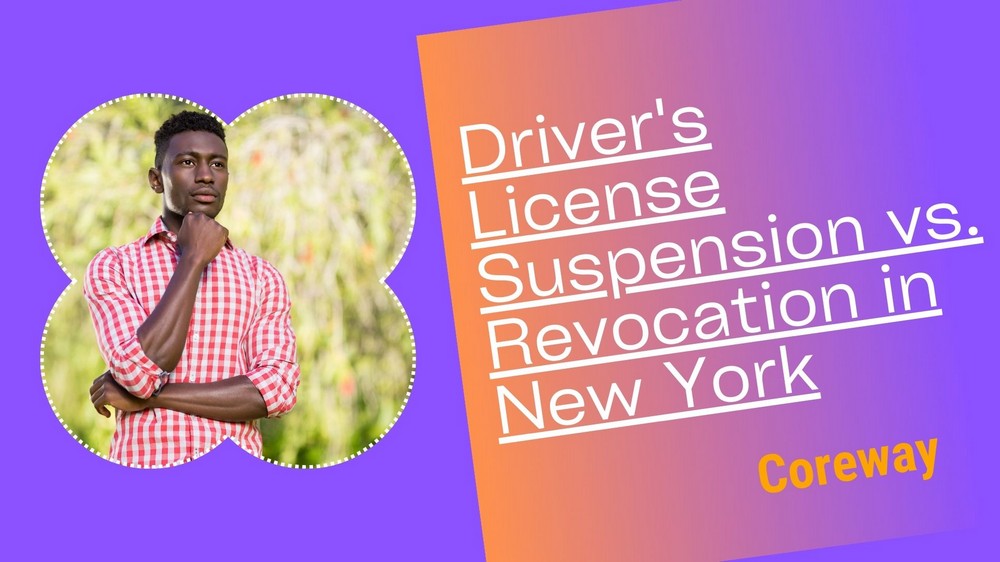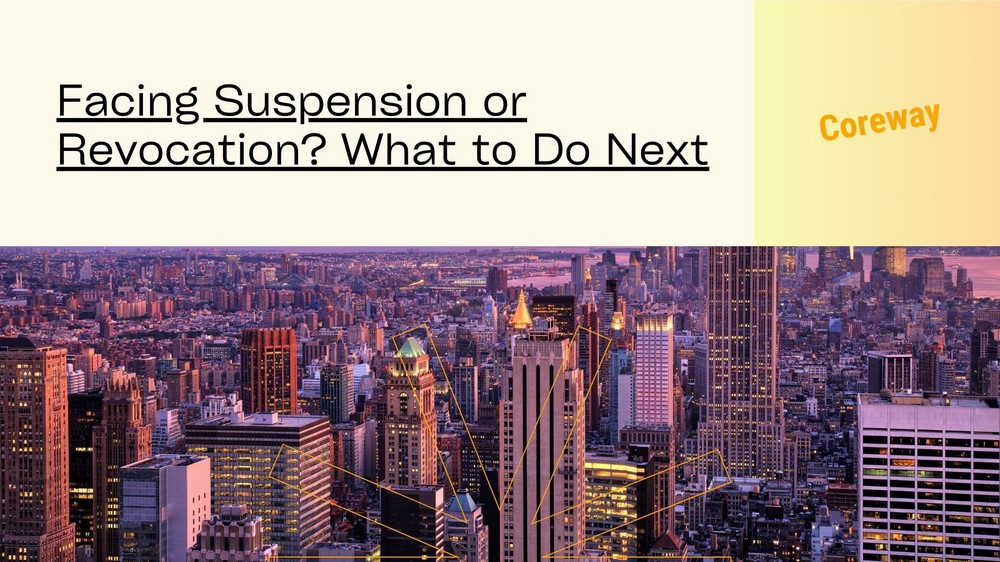Driver's License Suspension vs. Revocation in New York

Table of Contents
If you're a driver in New York State, it's crucial to understand the potential consequences of traffic violations on your driving privileges. Two of the most severe penalties are driver's license suspension and revocation. While both result in the loss of driving privileges, there are key differences between the two. In this article, we'll explore the distinctions between a suspended and revoked license in New York, and what steps you need to take to get back on the road.
What is a Suspended Driver's License in New York?
A suspended driver's license in New York is a temporary loss of driving privileges. Common reasons for suspension include:
- Accumulating too many points on your driving record
- Failing to pay traffic tickets or fines
- Driving without insurance
- Certain criminal convictions
Suspensions can be either definite (with a set end date) or indefinite (requiring a specific action to be lifted).
To reinstate a suspended license, you typically need to:
- Wait for the suspension period to end (for definite suspensions)
- Pay any outstanding fines or fees
- Complete any required courses or programs
- Provide proof of insurance
- Pay a reinstatement fee
Call Us Today 6AM-10PM
Or fill out the form 24/7
Our team is here to guide you with promotions, instructor availability, and the best training package for you.
What is a Revoked Driver's License in New York?

A revoked driver's license is a more severe penalty than a suspension. When your license is revoked, it is essentially canceled, and you must apply for a new license once the revocation period is over. Common reasons for revocation include:
- Serious traffic offenses, such as hit-and-run or vehicular manslaughter
- Driving under the influence of alcohol or drugs (DUI/DWI)
- Repeated traffic violations
- Making false statements on a license application
After the revocation period ends, you must:
- Apply for a new driver's license
- Pay the required fees
- Pass written and vision tests
- In some cases, attend a hearing or provide additional documentation
|
Suspension |
Revocation |
|
Temporary loss of driving privileges |
Permanent loss of driving privileges |
|
License can be reinstated after meeting requirements |
Must apply for a new license after revocation period |
|
Typical reasons: point accumulation, unpaid fines, driving without insurance |
Typical reasons: serious offenses, DUI/DWI, repeated violations |
Call Us Today 6AM-10PM
Or fill out the form 24/7
Our team is here to guide you with promotions, instructor availability, and the best training package for you.
Facing Suspension or Revocation? What to Do Next

If you're facing a driver's license suspension or revocation in New York, it's advisable to consult with a traffic attorney for specific legal guidance. They can help you understand your options and navigate the process of reinstating your driving privileges.
For general information, you can visit the New York DMV website, which provides resources on suspensions, revocations, and the steps required to get your license back.
Understanding the difference between a suspended and revoked driver's license in New York is essential for any driver in the state. While a suspension is a temporary loss of driving privileges, a revocation is a more severe penalty that requires you to apply for a new license once the revocation period is over. If you find yourself facing either of these penalties, it's crucial to take the necessary steps to regain your driving privileges and get back on the road legally.
Call Us Today 6AM-10PM
Or fill out the form 24/7
Our team is here to guide you with promotions, instructor availability, and the best training package for you.
Frequently Asked Questions
-
What's the difference between a suspended and revoked driver's license in New York?
A suspended license is a temporary loss of driving privileges, while a revoked license is a permanent cancellation of your license. With a suspended license, you can typically reinstate your driving privileges after meeting certain requirements, such as paying fines or completing courses. If your license is revoked, you must apply for a new license once the revocation period is over.
-
What are some common reasons for a driver's license suspension in New York?
Common reasons for a suspended license in New York include: Accumulating too many points on your driving record Failing to pay traffic tickets or fines Driving without insurance Certain criminal convictions
-
What are some common reasons for a driver's license revocation in New York?
Common reasons for a revoked license in New York include: Serious traffic offenses, such as hit-and-run or vehicular manslaughter Driving under the influence of alcohol or drugs (DUI/DWI) Repeated traffic violations Making false statements on a license application
-
How do I reinstate my suspended driver's license in New York?
To reinstate a suspended license, you typically need to: Wait for the suspension period to end (for definite suspensions) Pay any outstanding fines or fees Complete any required courses or programs Provide proof of insurance Pay a reinstatement fee
-
What do I need to do to get a new license after a revocation in New York?
After the revocation period ends, you must: Apply for a new driver's license Pay the required fees Pass written and vision tests In some cases, attend a hearing or provide additional documentation
-
What's the difference between a definite and indefinite suspension?
A definite suspension has a set end date, while an indefinite suspension requires a specific action to be lifted, such as paying outstanding fines or completing a required course.
-
Can I drive while my license is suspended or revoked in New York?
No, it is illegal to drive with a suspended or revoked license in New York. If caught, you may face additional fines, penalties, and even jail time.
-
What should I do if I'm facing a driver's license suspension or revocation in New York?
If you're facing a suspension or revocation, it's best to consult with a traffic attorney for specific legal guidance. They can help you understand your options and navigate the process of reinstating your driving privileges.
 English
English Spanish
Spanish 

